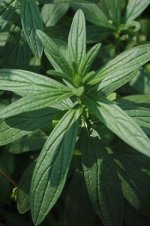Your clinical history—marked by a sudden drop in energy, misattributed initially to burnout, followed by the discovery of severe focal peripheral artery disease (PAD) at the aortic bifurcation without downstream calcification, and a background of chronic infections (malaria, amoebiasis, schistosomiasis), COPD, and post-exertional malaise (PEM)—raises important questions about the interplay between infection, inflammation, and vascular disease.
Infection, Inflammation, and Focal PAD
- Infection and PAD
There is growing evidence that chronic infections can contribute to the development of atherosclerosis and PAD through persistent systemic inflammation. Infections such as Chlamydia pneumoniae, Helicobacter pylori, and cytomegalovirus have been linked to increased PAD risk, especially in the presence of elevated inflammatory markers like CRP. The cumulative burden of multiple infections further increases this risk5.
- Focal Stenosis and Infection
While PAD in smokers usually presents as diffuse, multisegmental disease, your case of a highly focal stenosis at the aortic bifurcation with no further distal calcification is atypical. Such a pattern may suggest localized arterial injury or inflammation, potentially from a prior infectious or inflammatory event, rather than classic atherosclerosis alone5. Chronic infections—especially those causing systemic or vascular inflammation—could theoretically create a localized environment prone to stenosis.
- Systemic Inflammation and Vascular Disease
Systemic inflammation, from either chronic infection or immune dysregulation, is now recognized as a key driver of atherosclerosis and PAD, independent of traditional risk factors like smoking5. Inflammatory molecules and immune responses can damage vascular endothelium, promote plaque formation, and lead to focal or diffuse arterial disease.
Your Clinical Pattern
- COPD and Infection
While your COPD is likely multifactorial (smoking, early-life pneumonia), chronic respiratory infections can also contribute to persistent inflammation and vascular risk.
- Remission and PEM
The stepwise remission of PAD, COPD, and then PEM (post-exertional malaise) in three-year intervals suggests a complex interplay between resolving inflammation, vascular health, and energy metabolism. PEM is a hallmark of ME/CFS, which is often triggered or perpetuated by infections and immune dysregulation.
Summary Table
| Condition | Possible Infectious/Inflammatory Link | Typical Presentation | Atypical Feature in Your Case |
|---|
| PAD | Chronic infection, systemic inflammation | Diffuse, multisegmental | Highly focal aortic bifurcation |
| COPD | Smoking, early-life pneumonia, chronic infection | Progressive, diffuse | Remission pattern |
| ME/CFS/PEM | Post-infectious, immune dysregulation | Chronic fatigue, PEM | Onset after other infections |
Conclusion
Your hypothesis that chronic or repeated infections may have caused localized arterial damage—resulting in focal PAD at the aortic bifurcation—is supported by current understanding of infection-driven vascular inflammation
5. The absence of downstream calcification, despite a history of heavy smoking, further supports a non-classical, possibly infection-related mechanism. The sequence of remissions and the emergence of PEM/ME/CFS-like symptoms fit with evolving knowledge about the long-term systemic effects of chronic infections and inflammation on vascular and immune health.
If you have ongoing symptoms or concerns about ME/CFS, PAD, or related conditions, continued follow-up with specialists in infectious disease, vascular medicine, and immunology is advisable.
Citations:
- https://pmc.ncbi.nlm.nih.gov/articles/PMC5683430/
- https://www.escardio.org/Guidelines...lines/Peripheral-Arterial-and-Aortic-Diseases
- https://journals.sagepub.com/doi/10.1177/30494826241298225
- https://pmc.ncbi.nlm.nih.gov/articles/PMC8367646/
- https://www.ahajournals.org/doi/10.1161/circulationaha.109.918417
- https://www.ahajournals.org/doi/10.1161/CIRCINTERVENTIONS.117.005456
- https://journals.sagepub.com/doi/full/10.1177/30494826241296674
- https://www.sciencedirect.com/science/article/pii/S0022522308022502
Antwort von Perplexity:
https://www.perplexity.ai/search/20...3IyXxaIURYqVltglNh2C2A?utm_source=copy_output

